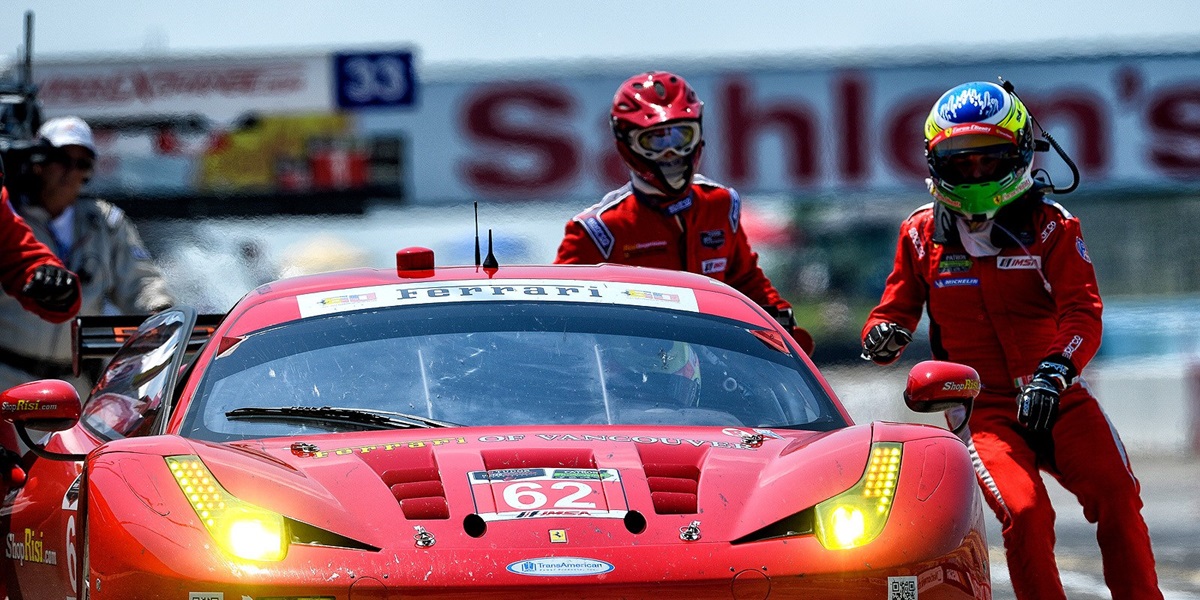
IMSA Teams Look to Save Seconds When Swapping Drivers
July 11, 2014 | By Matt Cleary
The first two races of the Kroger Super Weekend at the Brickyard, Friday’s IMSA TUDOR United SportsCar and Continental Tire SportsCar Championship endurance races, will see something that is common when you and I take a road trip, but is not something you usually see in racing—driver changes.
The IMSA season has races that will last anywhere from three to 24 hours long, so it takes more than one driver to get to the finish line. The teams and drivers focus just as hard on saving precious seconds during a driver change as they do on cutting down their lap times. Every second spent in pit lane is one that the competition is moving ahead at full speed on the track, so making the stop quickly is critical.
“It's a whole different aspect to our sport,” said Jordan Taylor, who drives the No. 10 Konica-Minolta Chevrolet Prototype for Wayne Taylor Racing and shares with his co-driver and brother Ricky Taylor. “You can lose a lot of time, or you can be okay. For our team, we take the driver changes very seriously so every weekend, we practice. Every time we come in the pits during a practice session, we do a practice driver change. We try to get the driver change done in under 15 seconds.”
It takes three people - the driver in the car, a driver assistant, and the replacement driver - to work perfectly together and time all the movements just right in order to have a fast and safe driver change.
When the car comes to a stop, the clock is already ticking. While the pit crew jumps over the wall to start the four tire change and fuel, the first driver does his best to get out of the car as quickly as possible, loosening his belts on the way into the pit box in order to make quick work of the exit from the car. But it’s not just as simple as getting out of a car:
“As a driver, when you are called to the pits, you are already thinking about what you have to do; you've got an air hose connected to your helmet, a drink tube, a radio, netting in the car that you have to undo, the door to open and seatbelts to take off. So for the driver getting out, there's a lot to do,” said Ricky Taylor. “You can disconnect the air hose, the drink, the cool suit and loosen your belts a little (on the in-lap) but you can't disconnect the window net or the belts until you've stopped.”
The second driver then jumps into the car, with the driver assistant following him closely. The driver assistant focuses on all the safety equipment, including all the seatbelts as well as securing the window net, while the driver works to do the rest—plug the radio in, get the cooling equipment plugged in, and then makes sure the steering wheel is straight and he is ready to go the moment the door closes.
And while the job of changing drivers might seem to be straight forward, there is a lot that can go wrong in a short bit of time.
“A (seat) belt getting twisted up or the driver sitting on a belt,” said Jordan Taylor about the little things that can slow you down. “It's the things that you don't expect that happen; like your HANS device gets hooked on the window net. And then the guy getting in is so used to the guy getting out just popping out, you're not expecting that and then you're just waiting. You don't actually see what happens and then once you see it, two seconds are gone. Two seconds on a pit stop can be huge. It's the little things.”
Just like in a road car, another complicating factor is the fact that while most drivers are thin and good shape…they can still be different sizes. For most of the IMSA GT category cars, there is a solution that is familiar, as the seats actually slide back and forth to accommodate different size drivers.
“For my co-driver and I, the sliding seat in our Ferrari is pretty important,” said Jeff Westphal, who shares the No. 63 Ferrari 458 Italia with Alessandro Balzan. “He's ‘not so tall’ at 5’5" and I'm taller at 6 feet, so there's a big difference and the sliding seat allows us to be as quick as a pairing of the same size when you do a driver change because our belts have to be different and so on and so forth. It's kind of one of the integral parts of us being successful at that.”
Getting it wrong can also have serious consequences, besides just the time lost.
“When you are racing somebody and you know you've got the belts done but you didn't have time for the drink or the air hose, you are not going to be thinking about getting anything hooked up,” said Jordan Taylor. “Then 30 minutes goes by and you are already overheated because you were so rushed!”
So when IMSA comes to the Indianapolis Motor Speedway at the end of the month, remember to keep an eye on the cars, even when they are in the pits!